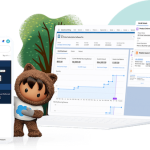Think back to your last online shopping experience. Perhaps it was your regular grocery order, or the latest activewear that you’ve had your eyes on. Maybe something a little more indulgent like that newest gaming console.
Whatever it was, it’s likely you had one of two types of experiences as a customer:
You browsed around, found just what you were looking for, perhaps even received a great discount, placed the order in a click or two, got told exactly when to expect it, received it, and even got a personalised follow-up with some great offers and tips. Seamless from start to finish!
Or, perhaps you had the other type of experience. You know, where the whole thing feels like a frustrating rollercoaster: clunky websites, broken transaction gateways, multiple online chats and phone calls with customer service, and marketing promotion that feels spammy at best. All these before your order was even processed, let alone delivered. Lesson learned: Not ordering from this shop again!
So, what differentiates the first type of experience from the second? Three words: customer relationship management (or CRM). CRM is a technology that helps businesses manage relationships and interactions with customers and potential customers. The goal is simple: Improve business relationships (and, therefore, customer experience). A CRM system helps companies stay connected to customers, streamline processes, and improve profitability.
In short, a good CRM can be the difference between an excellent customer experience and an average one.
The State of CRM in the Asia-Pacific
The COVID-19 pandemic has had a transformative impact on the way we live our lives, run our businesses, and engage with products and services as customers.
This impact manifests in distinct ways. Customers have become more digitally savvy and expect great experiences throughout their purchasing journeys. Yet, many businesses are still playing catch-up when it comes to delivering great digital experiences to their customers.
In fact, new research reveals that over one in two executives in the Asia-Pacific (APAC) region have struggled to maintain good customer experience (CX) due to an accelerated transition to remote work.
Download the State of CRM research, featuring a special spotlight on APAC and all the global insights and trends.
The global State of CRM research from Forrester Consulting, commissioned by Salesforce, surveyed 795 executives and 1476 employees globally. These include 164 executives and 319 employees across APAC (Australia and New Zealand, India, and Singapore). This research aims to understand how their teams use CRM today, their key challenges, and opportunities for businesses to maximise their use of CRM to grow with resilience.

The challenge
Data, data everywhere
A vast majority (71%) of APAC executives report that customer data in their business originates from far too many sources. This means their teams struggle to make sense of it, access crucial customer insights in real time, or act on them to help deliver good CX.
While this a region-wide challenge, it manifests most prominently in Australia and New Zealand (ANZ), with 75% of executives feeling this way.
Remote but not in control
The seismic shift to remote work has also created productivity and communication challenges among employees. This is due largely to the lack of a well-integrated and accessible CRM system. This has had a flow-on effect on CX. In fact, 60% of APAC executives note that they were unable to maintain their customer engagement levels during the shift to remote, a challenge also echoed by employees.
Singapore is the most impacted by this, with 61% of employees reporting communication and coordination issues while working remotely. Meanwhile, workers in India are almost 1.5 times more likely to report that they struggle with accessing their CRM system while working remotely.
Basic doesn’t cut it
A well-integrated, modern CRM can unite multiple teams — beyond just sales and service — to help deliver good CX. However, CRM use in APAC is still largely transactional and basic, with limited adoption of more advanced use cases like deploying Artificial Intelligence (AI) or Machine Learning (ML). This limits how a business interacts with customers in smart ways, but also how well its employees and teams liaise with each other.
ANZ businesses, in particular, are lagging behind their peers in this regard — with only 25% augmenting employee processes with AI or machine learning (ML) recommendations. That’s compared to 36% and 39% for India and Singapore respectively.
The opportunity
However, these challenges coexist with the silver lining of opportunity.
Prioritising CX
Executives across APAC are intentional about making a change for the positive, with 79% affirming that a CRM system is instrumental in delivering a seamless customer experience. In fact, nearly half of them say that delivering a superior CX across multiple channels of engagement is a top priority for the next 12 months. In even more positive news, a staggering 81% of executives in the region expect CRM use to expand beyond sales and service/support over the next three to five years. This signals improved coordination between teams, as well as a better experience for customers.
This optimism is highest in Singapore at 87%, followed by 82% and 75% in India and ANZ respectively.

Driving efficiencies
While the current use case for CRM across APAC is basic, the research finds that by 2023, 73% of businesses will be using AI-powered automation to enable easier customer engagement. A further 80% will be using automation to relieve employees of repetitive day-to-day processes, allowing them to focus on work that truly matters.
Close to 40% of organisations in Singapore and India are already using AI-driven insights to augment employee processes. While ANZ (25%) is currently lagging, over half of executives there plan to add this capability within the next two years.
The upshot

Employees as changemakers
According to Brian Solis, Salesforce’s Global Innovation Evangelist, it’s important to remember that technology alone won’t solve business problems. People are the real changemakers, and they need to be empowered with the right tools and knowledge to achieve greatness. “Adoption, training, and change management are such critical pieces of any CRM deployment, and your overall employee experience (EX). When employees don’t know how to use the CRM, or understand the value CRM can bring to their daily workflows, success and ROI will always remain out of reach,” says Solis.
Security, flexibility, automation
APAC executives want to ensure that employees can access customer data, whenever and wherever they need to. Therefore trust and security come up as the top criteria that regional execs use when evaluating CRM systems. Work-from-anywhere connectivity and advanced capabilities such as AI insights and automation are close behind as the second and third most important priorities.
Integration, integration, integration
It comes as no surprise that customers have come to expect highly personal interactions. They expect any business they interact with to have a full understanding of who they are and where they are in their journey. Teams on the frontlines can’t serve customers by using CRM applications that are disjointed, or only support part of the customer lifecycle. Therefore, businesses need to unify CRM applications, and support role-based views to ensure that customers receive the experiences that they expect.
State of CRM research tells us that organisations that prioritise consistent usage of CRM systems across teams, better training for customer-facing employees, and enhanced automation maximise the power of their CRM to deliver greatest business value. This, therefore, makes them more resilient in the face of massive disruption or change.
The State of CRM: A spotlight on Asia Pacific
New research shows how organisations are meeting the future of work with the next generation of Customer Relationship Management (CRM).




























